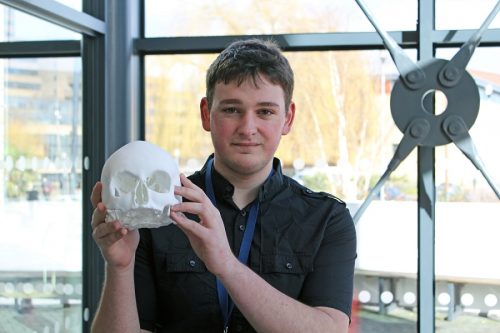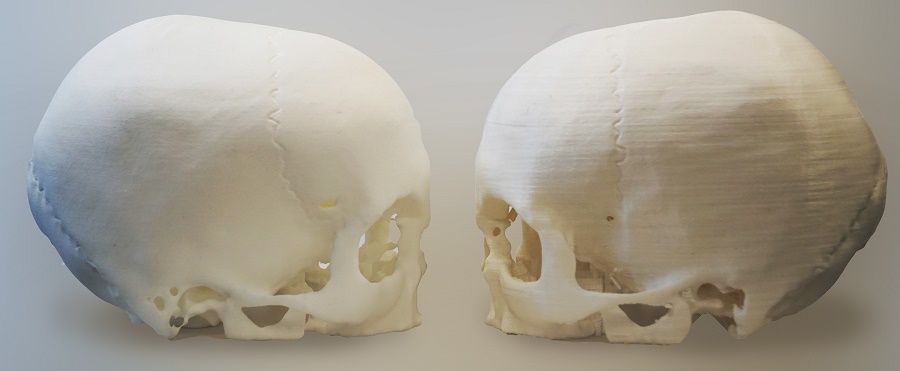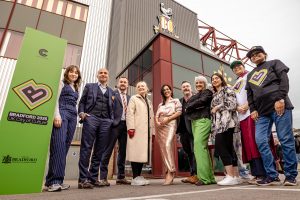Skull printed in 3D at innovation centre

The design team at the 3M Buckley Innovation Centre (3M BIC) in Huddersfield have printed two 3D skulls which could eventually allow doctors a better insight into patient injuries.
The process is usually used for maxillofacial reconstruction, and at the 3M BIC, designers are showcasing how 3D printing can be used in the medical industry.
Using free software, Paul Tallon, consultant designer at the 3M BIC and visualisation assistant, Luke Phillips, converted the raw data of a damaged skull from the CT scan to a 3D printable file.
Two life-sized versions of the skulls were then 3D printed. The first version of the skull has the greater detail, said the team, and the second print took more than 50 hours to complete.

3D printed skulls
Dr Michael Wilson, centre manager at the 3M BIC, said: “Our Skull project is not only a great showcase for 3D printing, but also underlines how 3D design can be incorporated into the healthcare industry. If doctors can view CT and MRI scan data more freely in 3D it would give them a greater understanding of a patient’s condition and refine the process of reconstructive surgery.”
“If someone fractures their skull, for example, then a scan can be used and translated into 3D. A copy of the undamaged side of the skull can be printed in titanium and then attached to repair the damage caused in the patient’s skull.”
The 3M BIC in-house design team is currently looking at MRI scan data of the shoulder and wrist of a retired rugby league player.








